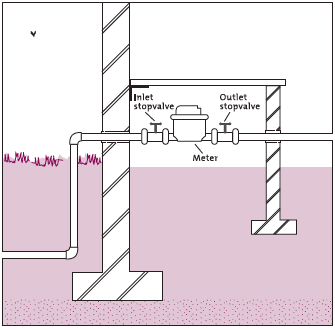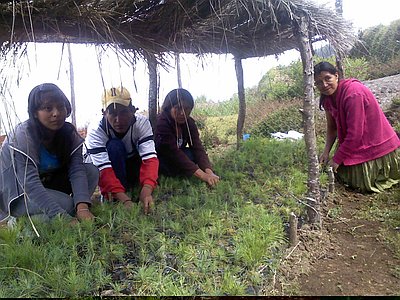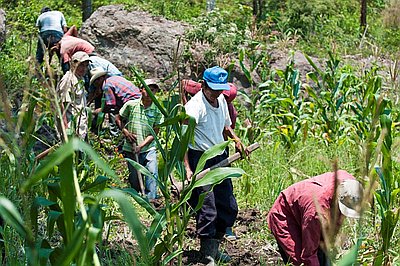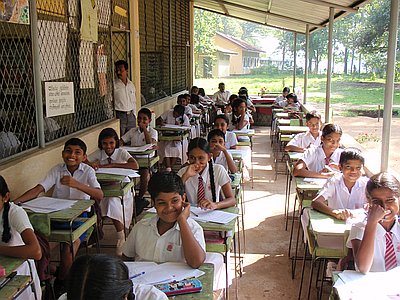Domestic connection / Pipelines
When enough water and funds are available, the best option is to connect every house or yard to a piped water system. This is more convenient for water users, generally increases water use, and improves hygiene. A service pipe, usually made of PE or PVCu, leads from the distribution network to the house or yard.
The domestic connection can consist of a single tap on a post, or a system of pipes and taps in a house. A gate valve and a water meter are normally installed at the entry to the premises. Drainage must also be provided. The residual head of water (pressure) at household connections should be 10–30 m.
Users per connection: Usually, one family.
Yield: Depends on the pressure of the public main, diameter of the household connection, and demand.
Construction, operations and maintenance
Taps are used throughout the day. They should not be left open or leak, otherwise mud and pools will form, which must be avoided. The tap and site must be cleaned regularly and the drain inspected. In case of leakage, a rubber washer or other part of the tap may need to be replaced. Any structure on the tap site and drainage system may need to be repaired. Occasionally, the service pipe, fittings and accessories may leak and need to be repaired or replaced. O&M of the domestic connection are carried out by the household itself, or by a community water committee. When water is scarce, or if the pressure is too low in part of the network, the water committee has to motivate users to limit their water use, or create conditions that will induce users to reduce water consumption (e.g. a tariff structure that discourages excessive water use).
Potential problems
— leaks may not be repaired and water will be wasted;
— if too much water is lost from the system, or if water becomes scarce, it may be difficult to ensure that everyone has water, which could lead to the inequitable distribution of water;
— initial costs for household connections are higher, and it is complicated to maintain the distribution network.
Costs
Initial cost: Depends on factors, such as whether the domestic connection extends into a house, the type of piping material used, whether PE or PVC-U pipes are available locally, etc.
Field experiences
| Akvo RSR Project: MWA-LAP: Guatemala
CARE will implement the program in Guatemala, concentrating activities in the Department of San Marcos which is in the Western Highlands of the country as can be seen in the accompanying map. This area is characterized by limited access to safe water – 40% of the rural population lack access. Access to improved sanitation facilities is similarly low -- 48% of the rural population lacks access. |
| Akvo RSR Project: MWA-LAP: Honduras
In Honduras, MWA member Water For People will be implementing the program in the municipality of San Antonio de Cortes. Consisting of 36 villages and 11 urban neighborhoods, the region has an area of 227 square kilometers with a population of 30,000. |
| Akvo RSR Project: Facilities Ibbagamuwa school Sri Lanka
Ibbagamuwa Central College in the North Western Province rural school with 1040 children grade 6, 7, 8 and 32 teachers will make use of the new facilities. These children come from poor families and don't live in the neighborhood. Daily many children must travel to and from school for 6 hours. Water is life, blood of the earth! |
Acknowledgements
- Brikke, François, and Bredero, Maarten. Linking technology choice with operation and maintenance in the context of community water supply and sanitation: A reference document for planners and project staff. World Health Organization and IRC Water and Sanitation Centre. Geneva, Switzerland 2003.




